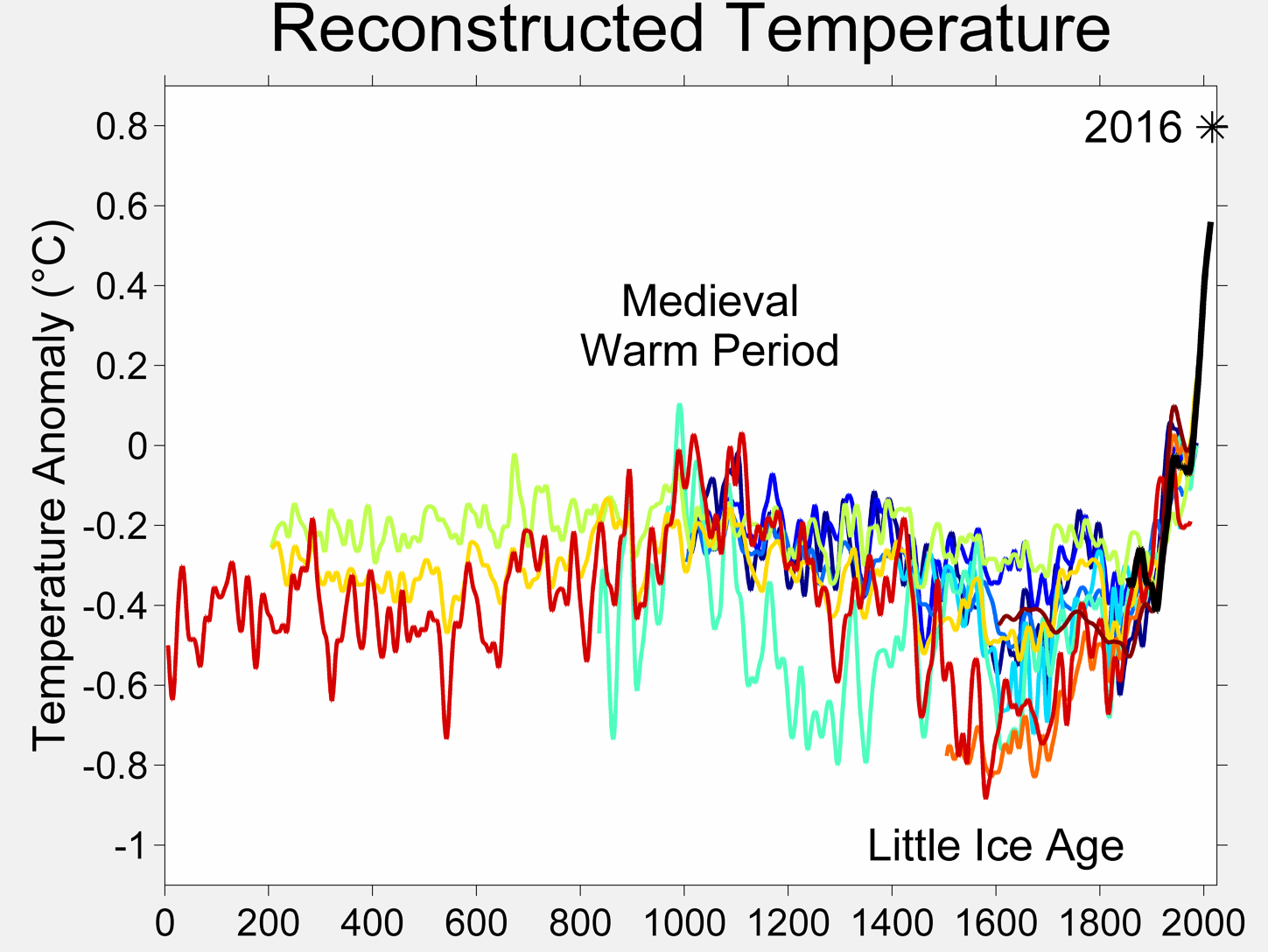The (10) reconstructions used, in order from oldest to most recent publication are:
(dark blue 1000-1991): P.D. Jones, K.R. Briffa, T.P. Barnett, and S.F.B. Tett (1998). , The Holocene, 8: 455-471. doi:10.1191/095968398667194956
(blue 1000-1980): M.E. Mann, R.S. Bradley, and M.K. Hughes (1999). , Geophysical Research Letters, 26(6): 759-762.
(light blue 1000-1965): Crowley and Lowery (2000). , Ambio, 29: 51-54. Modified as published in Crowley (2000). , Science, 289: 270-277. doi:10.1126/science.289.5477.270
(lightest blue 1402-1960): K.R. Briffa, T.J. Osborn, F.H. Schweingruber, I.C. Harris, P.D. Jones, S.G. Shiyatov, S.G. and E.A. Vaganov (2001). , J. Geophys. Res., 106: 2929-2941.
(light turquoise 831-1992): J. Esper, E.R. Cook, and F.H. Schweingruber (2002). , Science, 295(5563): 2250-2253. doi:10.1126/science.1066208.
(green 200-1980): M.E. Mann and P.D. Jones (2003). , Geophysical Research Letters, 30(15): 1820. doi:10.1029/2003GL017814.
(yellow 200-1995): P.D. Jones and M.E. Mann (2004). , Reviews of Geophysics, 42: RG2002. doi:10.1029/2003RG000143
(orange 1500-1980): S. Huang (2004). , Geophys. Res Lett., 31: L13205. doi:10.1029/2004GL019781
(red 1-1979): A. Moberg, D.M. Sonechkin, K. Holmgren, N.M. Datsenko and W. Karlén (2005). , Nature, 443: 613-617. doi:10.1038/nature03265
(dark red 1600-1990): J.H. Oerlemans (2005). , Science, 308: 675-677. doi:10.1126/science.1107046
(black 1856-2004): Instrumental data was jointly compiled by the w:Climatic Research Unit and the UK Meteorological Office Hadley Centre. Global Annual Average data set TaveGL2v <2> was used.
